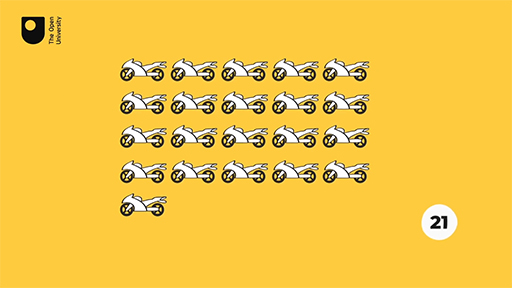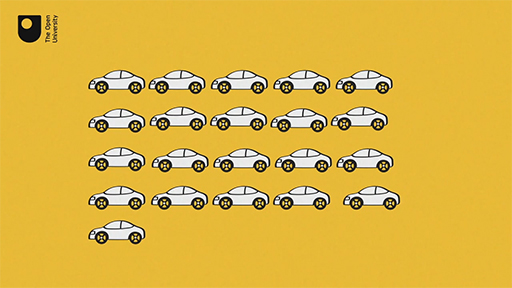2 Problem solving
When two people tackle a problem there is a good chance they will solve it in a different way to each other – that is absolutely fine! Some approaches may just be more efficient and get you to an answer more quickly than others. The more experience you have with problem solving the better you will become at it.
Depending on your previous experiences and how you initially take in a particular problem, the way you decide to begin to solve the problem will vary. Solutions to everyday problems may just need the use of common sense and organisation to work your way through them.
As you work through any problem, remember that there are usually alternative methods for reaching the solution. If you get stuck using your initial approach, try a different one. Keep in mind that using pictures and staying level-headed will carry you far, and most likely help you finish solving an exercise. So try not to panic!
With these thoughts in mind, try the next activity. Just as with the dinner party puzzle in Activity 1, you will need to use logic and reasoning to recover missing pieces of information.
Activity 2 New vehicle
Imagine you’ve recently been looking for a new vehicle. You don’t know at the moment if you would like a motorbike or a car because you would like to get the best price possible and have the most options available.
When you call the dealership to enquire about its stock, the assistant manager, Paul, jokingly tells you that they have 21 vehicles available, with a total of 54 wheels. Just as you ask him how many of each type of vehicle he has, the phone call is inadvertently disconnected.
Can you work out how many motorcycles and how many cars the dealership currently has?
As with any problem there are different ways of approaching this problem, so when you’ve got your answer take a look at some other possible methods.
Remember, if you need a hint to help you get started click on ‘Reveal comment’ below.
Comment
There are many ways to solve this problem. You might consider trying to use pictures (visualisation can be very helpful) or select a starting point, such as assuming half are motorbikes and half are cars, and then revising your first guess.
Method 1: Diagrams
Answer

Transcript
Method 2: Comparing to ‘all cars’
Answer

Transcript
Method 3: Educated guess
Answer
You can make any guess you think is reasonable. For example, you might assume that about half of the vehicles were motorbikes – say, ten of the vehicles. To keep track of your guesses, a table is quite useful. As you make adjustments to your guesses, remember that the number of motorbikes plus the number of cars must equal 21.
| Motorbikes | Cars | Total number of wheels | |
|---|---|---|---|
| 10 | 11 | 10 × 2 + 11 × 4 = 64 | (too many wheels → need fewer cars) |
| 12 | 9 | 12 × 2 + 9 × 4 = 60 | (too many wheels → need fewer cars) |
| 14 | 7 | 14 × 2 + 7 × 4 = 56 | (too many wheels → need fewer cars) |
| 15 | 6 | 15 × 2 + 6 × 4 = 54 | This matches with what Paul told you. |
Once again, the conclusion is that there are 15 motorbikes and 6 cars at the dealership.
So, remember that when you come across a problem there will usually be more than one way to approach it. If you don’t get anywhere with your first method, see if you can come at the problem a slightly different way.
You are going to leave problem solving behind for a moment and move onto subjects that you might think feel like proper maths! It is important to have a good understanding of how numbers are put together so that they make sense to us and what they represent. You will turn your attention to this in the next section.
